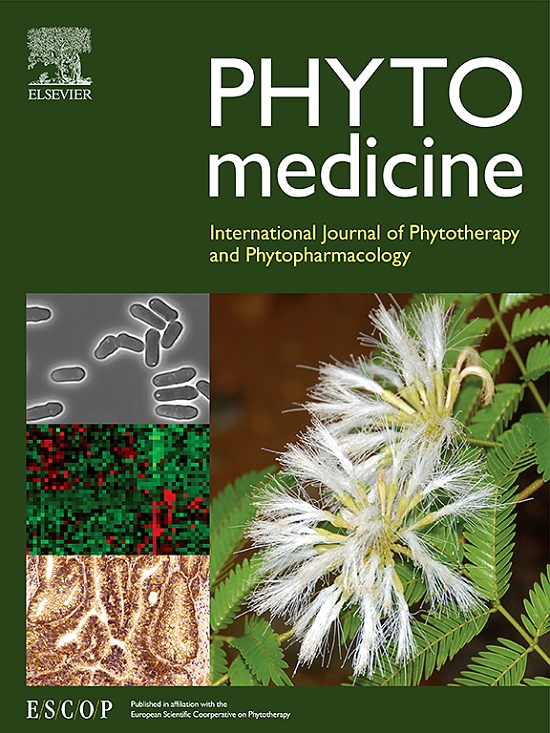Revealing the gastric protective mechanism of Physochlaina physaloides (L) G. Don. with clinical orientation: PPAR/NF-κB signalling pathway activation
IF 6.7
1区 医学
Q1 CHEMISTRY, MEDICINAL
引用次数: 0
Abstract
Background
Gastrointestinal diseases are global health issues. Current drugs for gastrointestinal diseases cause discomfort and toxicity; consequently, the use of traditional medicines and their extracts has gained attention in recent years. Physochlaina physaloides (L) G. Don. (P. physaloides) is traditionally used for diarrhoea and gastroenteritis; however, its material basis and mechanism of action for gastric injury have not been fully studied.
Purpose
This study aims to explore P. physaloides and their protective effects on gastric injury, together with the potential mechanisms.
Study design and methods
We constructed chronic gastritis and gastric ulcer models in rats using 56 % ethanol and anhydrous ethanol, respectively. Additionally, we screened gastric injury pathways via transcriptomics and the gene expression omnibus (GEO) database. Subsequently, we constructed an ethanol-stimulated GES-1 cell model and screened the active fraction of P. physaloides based on the cell survival rate and antioxidant activity. The effect of the active fraction of P. physaloides was investigated via tissue structure (HE staining), mucus secretion (PAS staining), anti-inflammatory activity, antioxidant activity, and gastric acid secretion levels. We employed liquid chromatography-tandem mass spectrometry (LC-MS/MS) to determine the active components of P. physaloides and the drug components in blood, before investigating the mechanisms via immunofluorescence, transcriptomic, metabolomics, network pharmacology, molecular docking, qRT-PCR, western blotting, and flow cytometry.
Results
The occurrence of gastritis, gastric ulcer, and gastric cancer is related to the PPAR/NF-κB signalling pathway, with decreased expression of FABP3 and PPARγ, and increased expression of Bcl-2 and TNF-α. The n-butanol fraction of P. physaloides (BPP) showed significant improvement in cell survival and antioxidant activity in vitro. BPP also alleviated inflammation and oxidative stress in rat models, including by upregulating CAT, GSH, SOD, IL-10, PGE2; downregulating VEGFA, IL-6, IL-8, TNF-α, and NO; improving pathological damage; restoring mucus levels; and reducing gastric acid secretion and macrophage expression. BPP and its active components, anisodamine and hyoscyamine, upregulated the expression of PPARα, PPARγ, CPT1, and FABP3, and downregulated NF-κB p65, thereby regulating the PPAR/NF-κB signalling pathway for gastroprotection. The BPP and its active components did not significantly increase the expression of GPX4 and SLC7A11, nor did they reduce the production of ROS. Therefore, their effects are unrelated to ferroptosis.
Conclusion
This study provides the first evidence of the effectiveness of BPP in the prevention of gastric ulcers and treatment of chronic gastritis. We adopted a multidisciplinary approach to demonstrate that BPP and its active components, anisodamine and hyoscyamine, protect against ethanol-induced gastric injury by regulating the PPAR/NF-κB and non-ferroptotic cell death pathways. BPP and its active components can target PPARγ and FABP3 and may have clinical application prospects to prevent gastric injury, which has unique advantages. These findings provide a scientific foundation for gastroprotection and expand the clinical applications of BPP.

求助全文
约1分钟内获得全文
求助全文
来源期刊

Phytomedicine
医学-药学
CiteScore
10.30
自引率
5.10%
发文量
670
审稿时长
91 days
期刊介绍:
Phytomedicine is a therapy-oriented journal that publishes innovative studies on the efficacy, safety, quality, and mechanisms of action of specified plant extracts, phytopharmaceuticals, and their isolated constituents. This includes clinical, pharmacological, pharmacokinetic, and toxicological studies of herbal medicinal products, preparations, and purified compounds with defined and consistent quality, ensuring reproducible pharmacological activity. Founded in 1994, Phytomedicine aims to focus and stimulate research in this field and establish internationally accepted scientific standards for pharmacological studies, proof of clinical efficacy, and safety of phytomedicines.
 求助内容:
求助内容: 应助结果提醒方式:
应助结果提醒方式:


